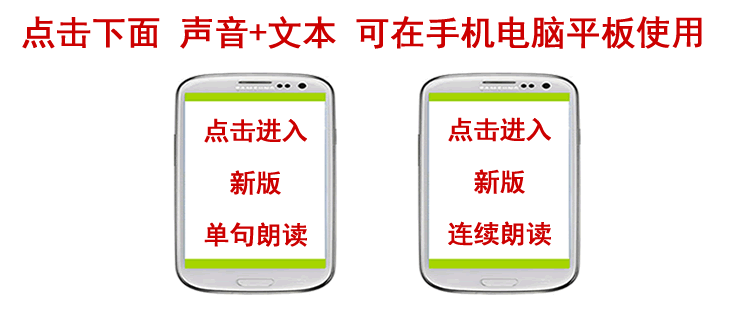特别广播英语第 103 课:Non-verbal Communication 非语言的文字的交际-1 If anyone asked you what were the main means of communication between people, what would you say? That isn't catch question. 假如现在有个人问你,什么是人与人之间的主要交际手段,那么你会说什么?这并不是一个能把人难住了的问题。
The answer is simple and obvious. It would almost certainly refer to means of communication that involve the use of words. 这个答案简单而又明确。这几乎可以肯定,指的就是用语言文字作为交际手段。
Speakers and listeners - oral communication, and writers and readers - written communication. 讲话的人和听讲的人用口语进行交际,而写家与读者用书面文字进行交际。
And you'd be quite right. There is, however, another form of communication which we all use most of the time, usually without knowing it. 对了,你答得相当正确。但是,还有一种交际方式是我们大家在不知不觉地大部分时间都在使用的,这就是我们有时称为的身体语言。
This is sometimes called body language. Its more technical name is non-verbal communication. 身体语言的更加专业化的名称就是非语言交际。
Nonverbal, because it does not involve the use of words. NVC for short. 之所以称为非语言文字的,就是因为这种交际是不用语言文字进行的。缩写是|NVC。
When someone is saying something with which he agrees, the average European will smile and nod approval. 当某人谈了某件事,大多数的欧洲人若是同意了某人所说的事,那么这个欧洲人就会微笑并点头表示同意。
On the other hand, if you disagree with what they are saying, you may frown and shake your head. 相反,若是你这个欧洲人不同意他们所说的事,那么你可能皱眉并摇摇头。
In this way you signal your reactions, and communicate them to the speaker without saying a word. 用这种方式你表示了你对他们所说的事的反应意见,你就一句话也没说就把你的反应意见传达给了跟你讲话的人。
I referred a moment ago to "the average European", because body language is very much tied to culture, and in order not to misunderstand, or not to be misunderstood, you must realize this. 我刚才提到"绝大多数欧洲人",因为身体语言与文化习俗有很大的联系,为了不致误解别人或为了不被别人所误解你必须意识到这一点。

